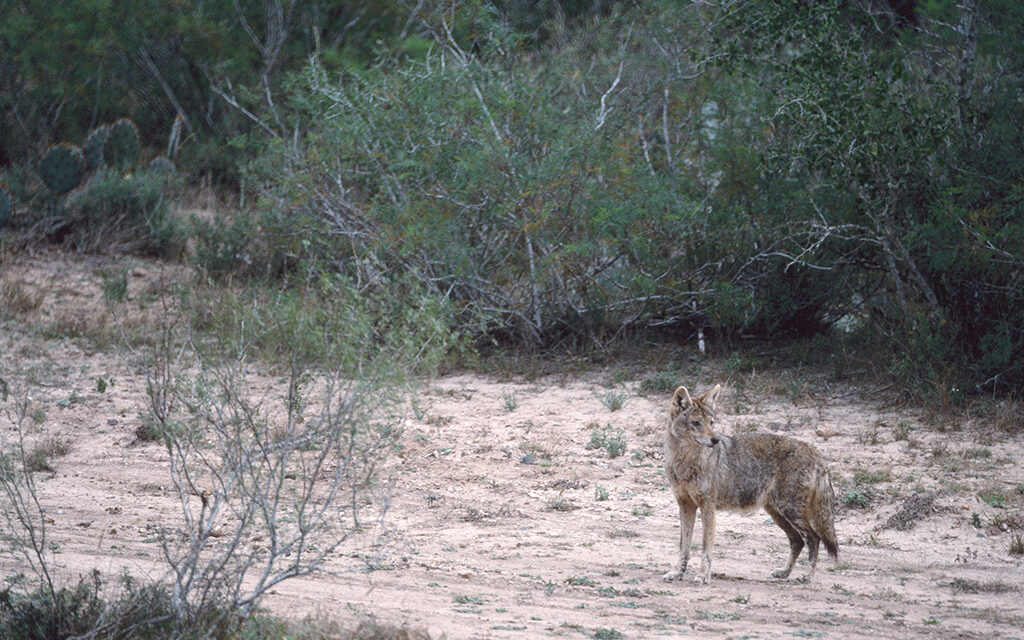by John Jefferson
My first predator calling adventure was pretty primitive by today’s standards.
I wore WW II camo-patterned pants, my old olive drab fatigue jacket, and carried a borrowed Remington .222 with a cracked stock. Another hunter had a .257 Roberts. He was our caller, using a mouth blown, wounded rabbit call.
He and his buddy carried a homemade box with rope handles containing a used Cadillac car battery that weighed a ton. It powered a hand-held sealed beam spotlight.
Surprisingly, he called up a fox. It barked at us in the dark. We never saw it. No one ever fired a shot.
My friend, Gary Roberson has published a superbly written and photo-illustrated book on predator hunting entitled “Eyes Right.” In it, he mentions that when a coyote barks at him, he packs gear and moves to an entirely different area. Hunting where he had been was over. The coyotes were spooked. So was our fox that night.
Gary had learned from everybody he hunted with. Conversely, I learned so much from him on a trip calling coyotes in New Mexico.
He had asked one of his friends what the most important change was in predator calling since the sixties. The reply he got was “camo clothing.” So many patterns and manufacturers. Select a pattern that matches the season and the country you’re hunting in.
I once wore my favorite pattern while calling in Minnesota near a frozen lake one December. Calling in greens and browns surrounded by snow, I wondered why nothing came. Duh!
Roberson and his wife, Deb, had purchased the internationally famous Burnham Bros. Game Calls company from Winston and Murry Burnham. Like many of us, he greatly respected those two varmint calling pioneers.
In his book, Gary asked Murry Burnham what change was most effective. Burnham’s reply was “electronic callers.” I bought one of Murry’s first electronic systems. I had success with it, but, gosh, that rig was heavy!
It could almost be called a piece of camo, itself. The speaker could be placed a distance away from the hunter and operated away from him. A critter coming to the sound of a distressed rabbit would invariably lock onto the sound and might not notice the hunter or photographer.
That’s what happened in the accompanying photo.
I was in an elevated box blind in South Texas. The coyote came in quickly. I moved slightly. The dog either saw me or had suspected a hunter there from past experience. But it was confused.
It stared at me, knowingly, but also studied the brush from which the sound came. I took enough pictures, then decided to move my tripod and long lens and shoulder my rifle. The coyote may have been hungry. He ignored my bumping the inside of the blind. The caller held his attention. A fatal mistake.
Gary’s caller is now much lighter. And he’s on the brink of introducing the first electronic game call that emits ultra-sonic sounds. Those are sounds humans can’t hear, but animals can hear from farther away. He expects to have it on the market around May 1.
JJ





